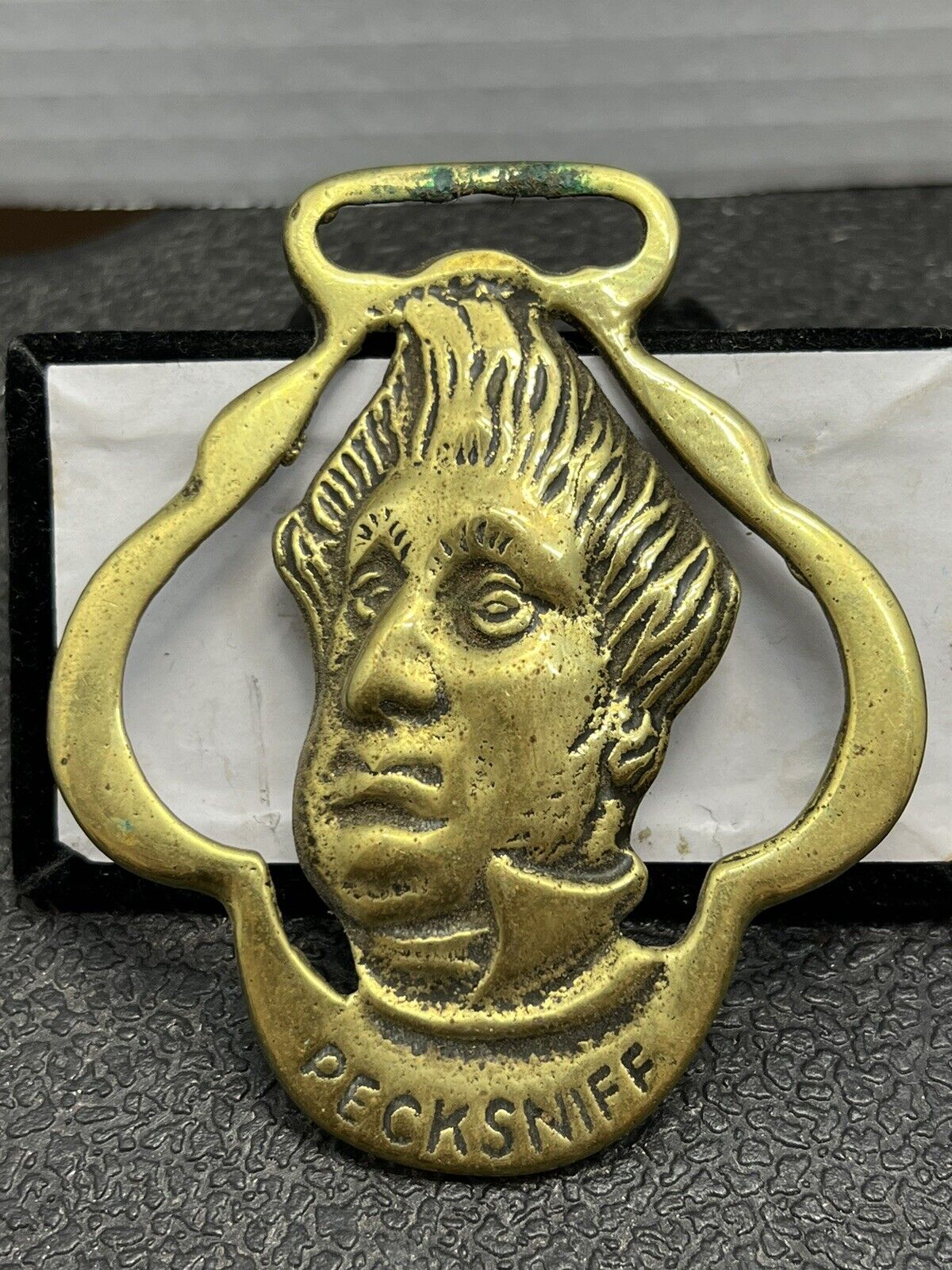|

On eBay Now...
(178X) English Horse Brass PeckSniff Charles Dickens Character Bridle Decoration For Sale

When you click on links to various merchants on this site and make a purchase, this can result in this site earning a commission. Affiliate programs and affiliations include, but are not limited to, the eBay Partner Network.

(178X) English Horse Brass PeckSniff Charles Dickens Character Bridle Decoration:
$9.99
(178X) English Horse Brass PeckSniff Charles Dickens Character Bridle Decoration. Measures approx. 3 5/8\" x 3\". - WE WILL DEFINITELY COMBINE SHIPPING ON ANY OF OUR sales! PICK YOUR ITEMS OUT AND I WILL SEND A COMBINED INVOICE.
The following information was copied from horse brass listing by Antiquarian Music and Books:Ahorse brassis a brass plaque used for the decoration ofhorse harnessgear, especially forshireand parade horses. They became especially popular in England from the mid-19th century until their general decline alongside the use of thedraft horse, and remain a collectors item today. Phalerais the archaeological term for equivalent disks, which were popular inIron Age Europe, including Ancient Rome. History
In ancient Rome, horse harnesses were sometimes embellished with horse brasses known asphalerae, normally inbronze, cut or cast in the shape of a boss, disk, or crescent, most often used in pairs on a harness.In medieval England, decorative horse brasses were in use before the 12th century, serving astalismansand status symbols, but extensive, original research by members of the National Horse Brass Society has shown that there is no connection whatsoever between these bronzeamuletsto the working-class harness decorations used in the mid-19th century which developed as part of a general flowering of the decorative arts following theGreat Exhibition. There are a great deal of die-hard, unfounded myths surrounding these decorations such as their usage as amulets to ward off the \"evil eye\". The most popular size is 3 3 inches of flat brass with a hanger by which the brass is threaded onto a horse harness strap, known as aMartingale. In England many of these items of harness found their way into country public houses as the era of the heavy horse declined, and are still associated today as a pub decoration. By the late 19th century heavy horses were decorated with brasses of all kinds and sizes. During this era working horse parades were popular throughout the British Isles and prize or merit awards were given, some by theRoyal Society for Prevention of Cruelty to Animals(RSPCA). Horse brasses were often highly prized by the \"carters\", who decorated their horse with them. Other horse brass subjects include advertising, royalty commemoration, and in later years, souvenir brasses for places and events, many of which are still being made and used horse brasses for their own sake other than as decorations for harness seems to have commenced around 1880, when women bought the newly issued, pierced-design, die-struck brasses which were used for pin-cushions. A little later these were often used as fingerplates on doors which can be corroborated by accounts in the trade magazine,Saddler and Harnessby the veteran saddler William Albery or Horsham in Sussex. From 1890 onward, collecting the various types of brass, i.e. face-pieces, swingers, and hame-plates, etc., became a highly popular pastime amongst the upper and middle classes. Indeed, the collecting of these humble brasses became especially popular amongst academics with many famous, early collections being formed by public schoolmasters and other prominent professionals, such as A.H. Tod,a Master at Charterhouse School and Dr Kirk of Pickering in Yorkshire, whose collection is still housed at theYork Castle Museumin York. The writing about such items also commenced c. 1890s and was dominated by muchVictorianromanticism surrounding the supposed, esoteric origin and ancient, unbroken lineage of these decorations. Such myths include their origin astalismanicsymbols being brought back to England by homecoming knights returning from theCrusades, or in later years, by migratingRomani, though, once again, absolutely no evidence has ever been offered in support of these theories.


(178X) English Horse Brass PeckSniff Charles Dickens Character Bridle Decoration $9.99
|